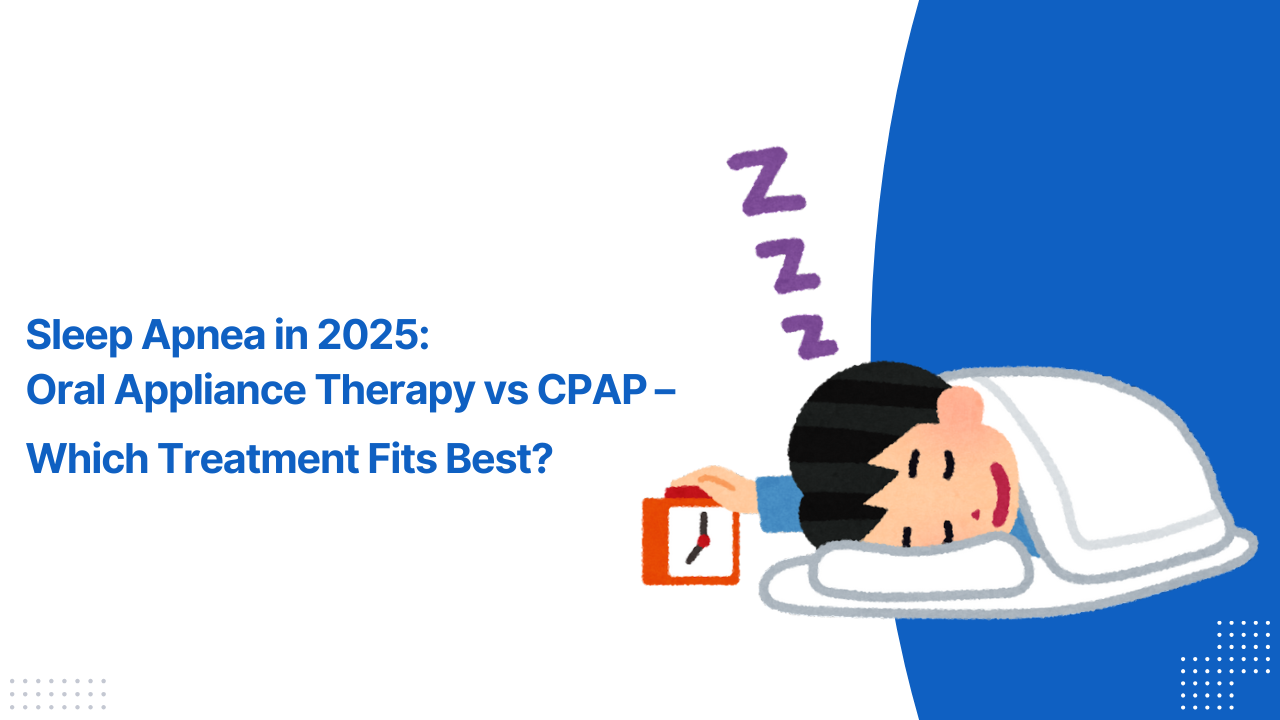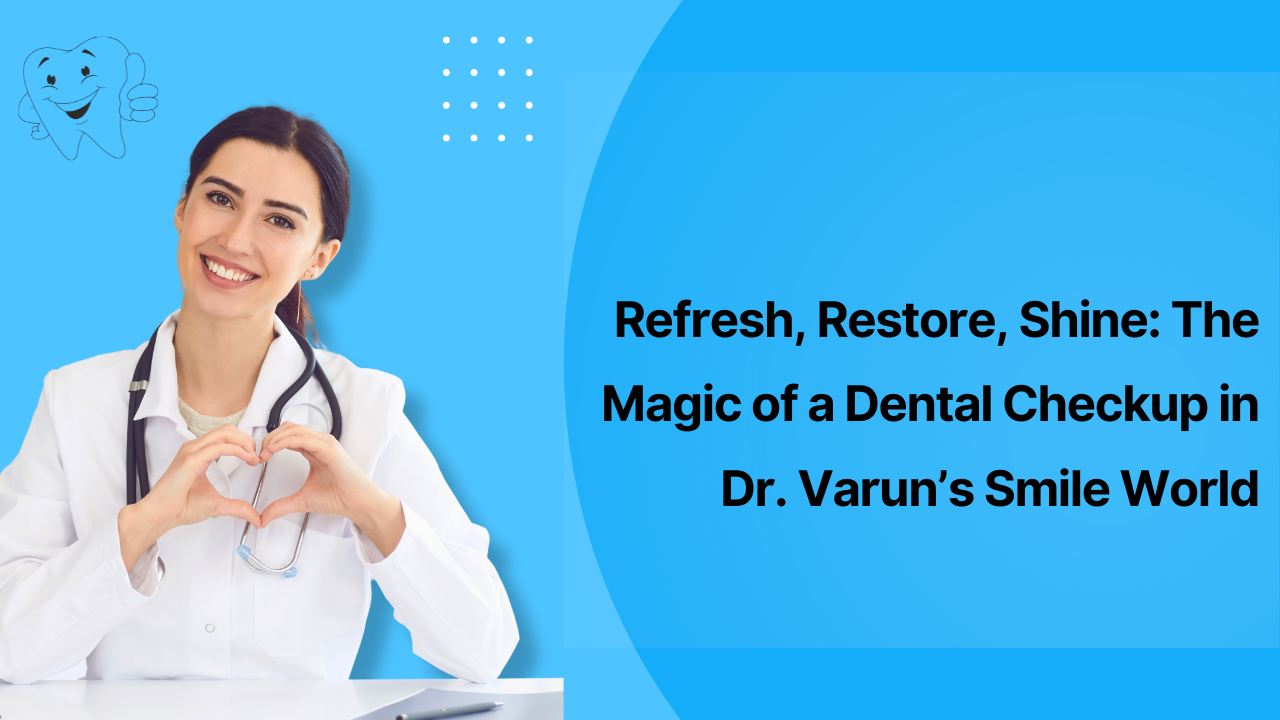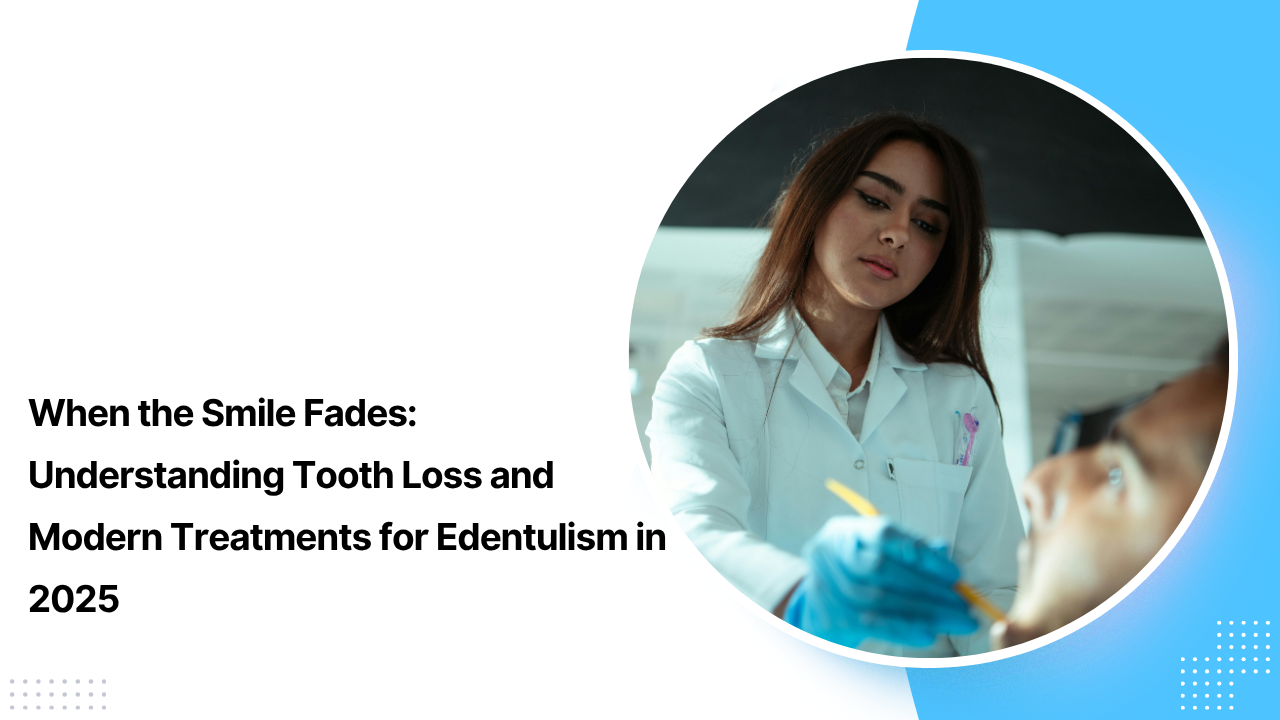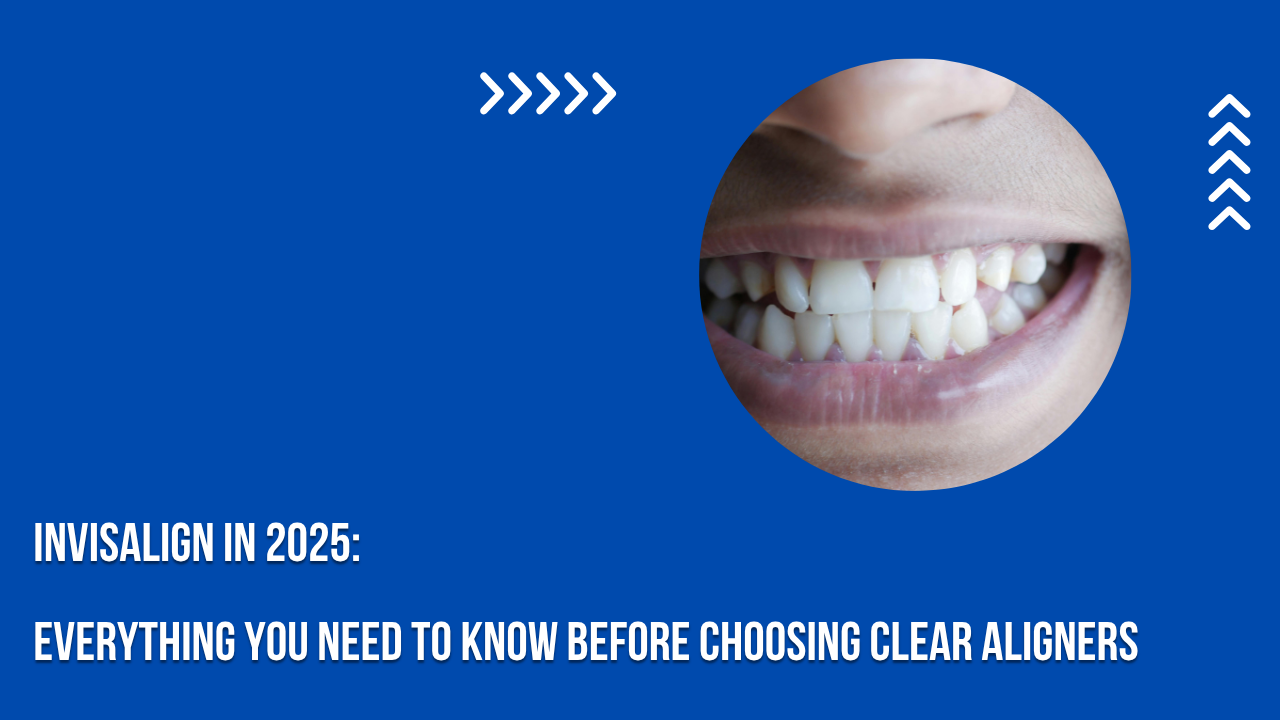Sleep is meant to rejuvenate both our bodies and minds. However, for those suffering from sleep apnea, nighttime often turns into a difficult ordeal rather than a peaceful rest. Loud snoring, sudden gasps for air, and frequent disruptions in the sleep cycle are more than just annoying—they can quietly damage overall health. If left untreated, Obstructive Sleep Apnea (OSA) is associated with high blood pressure, heart disease, diabetes, memory issues, and an increased risk of stroke.
For many years, CPAP (Continuous Positive Airway Pressure) therapy has been the primary treatment option. More recently, Oral Appliance Therapy (OAT) has gained popularity as a comfortable and lifestyle-friendly alternative. Both treatments are effective but differ significantly in their mechanisms and patient experiences.
So, which treatment should you consider in 2025? Let’s explore further.
Why Treating Sleep Apnea Is Urgent
Before comparing CPAP and Oral Appliance Therapy, it’s crucial to understand why treatment is essential. Sleep apnea is not just about snoring—it’s about oxygen deprivation. Each breathing pause means the body is deprived of oxygen, sometimes hundreds of times per night. This stresses the heart, disrupts hormone balance, and impairs the restorative sleep cycles necessary for brain and body repair.
Many people with untreated sleep apnea describe feeling perpetually tired, regardless of how long they sleep. Over time, this exhaustion impacts productivity, mood, relationships, and overall quality of life.
Effective treatment not only stops snoring but also safeguards long-term health. This is where CPAP and Oral Appliances come into play.
CPAP: The Established Gold Standard
How it works: A CPAP device delivers a continuous flow of air through a mask, keeping the airway open during sleep. It effectively prevents airway collapse, which is the main issue in obstructive sleep apnea.
Why doctors recommend it:
- CPAP is the most potent treatment available.
- It is particularly effective for moderate to severe OSA.
- It greatly improves oxygen levels and reduces apnea events.
- Long-term use decreases cardiovascular risks.
The downside: Despite its effectiveness, CPAP is not favored by everyone. Many users find the mask uncomfortable, the machine noisy, or the setup inconvenient for travel. Studies show that a significant number of patients discontinue CPAP use within the first few months.
The issue isn’t that CPAP doesn’t work—it’s that many people struggle to maintain consistent use.
Oral Appliance Therapy: A Comfortable Alternative
How it works: This therapy involves a custom-made dental device, similar to a retainer or mouthguard, that gently repositions the jaw and tongue to keep the airway open during sleep.
Why patients prefer it:
- It’s compact, portable, and silent.
- No mask, hoses, or electricity are required.
- Many find it more comfortable and less intrusive.
- It’s easier to travel with and fit into daily routines.
Limitations: Oral appliances work best for mild to moderate sleep apnea. They may not completely stop breathing interruptions in severe cases. Some users might experience jaw soreness or changes in bite, but these issues can often be managed with adjustments.
The main advantage is better adherence: patients tend to use oral appliances more consistently than CPAP, leading to greater real-world success.
CPAP vs. Oral Appliance Therapy: A Comparison
Both treatments are effective but excel in different areas.
| Factor | CPAP Therapy | Oral Appliance Therapy |
| Effectiveness | Gold standard, best for moderate to severe OSA | Very effective for mild to moderate OSA |
| Comfort | Mask, straps, airflow can be uncomfortable | Feels like wearing a mouthguard, more natural |
| Portability | Bulky, requires power source | Small, easy to travel with |
| Noise | Machine produces sound | Completely silent |
| Compliance | Lower long-term adherence | Higher patient compliance |
| Side Effects | Dry mouth, skin irritation, mask discomfort | Jaw soreness, possible bite changes |
| Best Fit For | Severe sleep apnea patients | Patients with mild/moderate OSA, or those who can’t tolerate CPAP |
Recent Research Insights
Recent studies have changed how experts view sleep apnea treatments. While CPAP remains the most effective at lowering the apnea-hypopnea index (AHI)—which measures breathing interruptions per hour—its benefits depend on consistent use. Oral appliances stand out because:
- Patients who use them regularly often see similar improvements in quality of life as CPAP users.
- Both treatments improve blood pressure, sleep quality, and daytime alertness when used consistently.
- For many with mild or moderate OSA, oral appliances are now a first-line treatment option.
The focus has shifted from “Which treatment is theoretically better?” to “Which treatment will the patient actually use nightly?”
The 2025 Perspective: Emphasizing Personalization
Sleep medicine has entered a new phase where tailoring treatment to the individual is crucial.
- Modern CPAP machines are smaller, quieter, and feature smart technology, often connecting to apps that provide real-time sleep data to patients and doctors.
- Oral appliances are digitally designed and 3D-printed for precise fit, comfort, and adaptability to jaw movements.
Some doctors recommend combination therapy, using an oral appliance alongside CPAP at lower pressures to enhance comfort and adherence.
So, Which Option Works Best?
Here’s a way to consider it:
- If your sleep apnea is mild to moderate and you prefer something comfortable, straightforward, and easy to travel with, Oral Appliance Therapy could be the ideal choice.
- For moderate to severe sleep apnea, CPAP remains the gold standard. However, if you find it hard to tolerate, an oral appliance serves as a valid alternative.
- If one treatment alone isn’t effective, combining CPAP with an oral appliance might offer the advantages of both.
The key is not to decide between CPAP and Oral Appliance Therapy on your own. Instead, consult a sleep specialist and, if considering an oral appliance, a dentist experienced in sleep medicine. Together, they can customize the treatment to fit your specific needs and preferences.
Final Thoughts: Sleep Better, Live Better
When comparing Oral Appliance Therapy and CPAP, there’s no single best choice. The best treatment is the one you can consistently use.
While CPAP may be more effective in theory, an oral appliance might feel more natural. Some individuals require one, others the other, and some benefit most from both. The positive news is that by 2025, patients have more options, greater comfort, and better support than ever before.
Ultimately, treating sleep apnea isn’t just about stopping snoring—it’s about safeguarding your health, increasing your energy, and enhancing your quality of life. Whether through CPAP, an oral appliance, or a combination of both, the goal remains the same: improved sleep and a healthier future.




